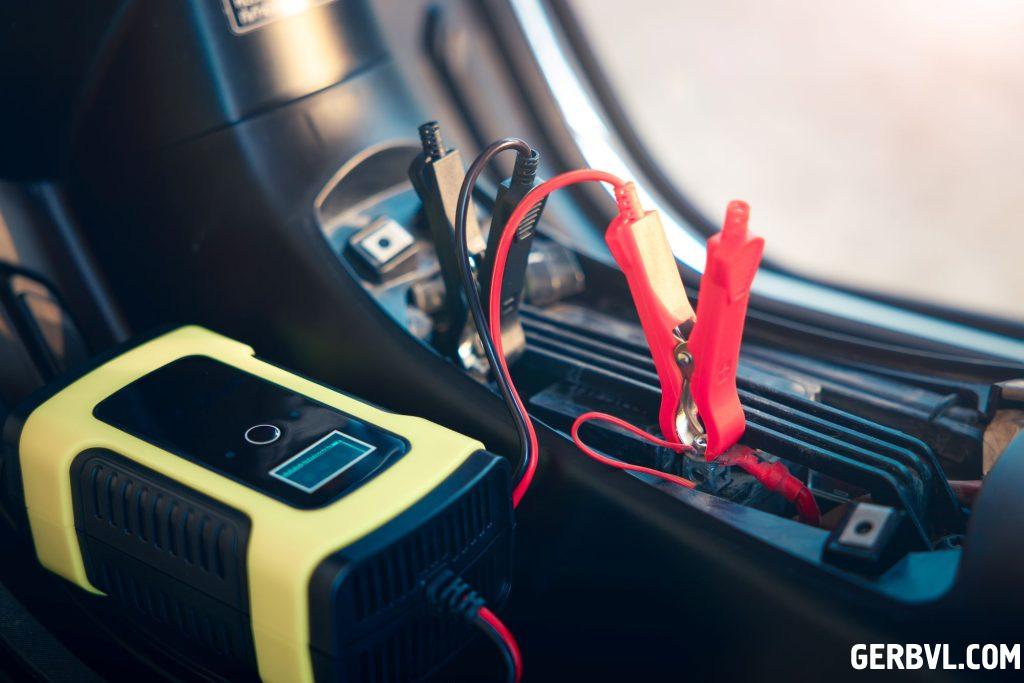As a car enthusiast and owner, you know how important it is to maintain your automobile in excellent shape. The car’s battery charge is one component that requires routine maintenance and attention. A dead battery can be an annoying and inconvenient issue, particularly if your vehicle is a vintage or seasonal vehicle.

A battery tender can help in this situation by providing a way to maintain your battery in good condition and ensure that it is ready to go when you need it. This article will go over what a battery tender is, why you need one, how to use it properly, the different kinds that are out there, and how to keep your battery tender in working order.
A BATTERY TENDER: WHAT IS IT?
Essentially, a battery tender is a gadget that keeps the battery in your car charged. It functions by providing a low, consistent voltage to the battery in order to make up for the tiny amount of charge that a battery gradually loses as a result of parasitic loads, self-discharge, and other causes.
A battery tender’s major function is to keep your battery at the ideal charge level by avoiding overcharging or excessive discharging, both of which can harm the battery.
The purpose of a battery tender
While every person’s circumstances are unique, most auto owners can gain by keeping a battery tender in their garage. It is actually easier and safer to connect certain alternatives to power because they can be permanently placed and linked into the car. Reasons for owning one consist of:
It increases battery longevity. Your battery will last longer if you use a battery tender, which is one of the biggest benefits. Sulfation is a common cause of battery failure that can be avoided by regular use of a battery tender. Lead sulfate crystals accumulate on the battery plates and cause sulfation, which shortens the battery’s life and capacity. This accumulation can be avoided with the low, steady charge of a battery tender, which can also dissolve any sulfation that has already developed.
It keeps you prepared. A battery tender guarantees that your battery is always ready to go for vehicles that remain inactive for extended periods of time, such as antique cars, motorcycles, boats, or seasonal vehicles. When you’re eager to get on the road, the annoyance of a dead battery won’t have to be dealt with.
It is economical. It can be expensive to replace a battery, particularly if it’s a high-performance or specialist battery. In the long term, using a battery tender can save you money by drastically lowering the frequency of battery replacements.
It is not harmful to the environment. It is a more sustainable option to prolong the life of your battery because doing so lessens the environmental impact of both battery production and disposal.
A GUIDE FOR USING A BATTERY TENDER: STEP-BY-STEP
Using a battery tender is not too difficult. To make sure you use it efficiently, take these steps:
Step1: Prioritize safety
Make sure you are in a well-ventilated place away from sparks or open flames before you begin. Verify that the battery is corrosion-free, dry, and clean.
Step2: Connect the battery tender
Connect the battery tender to a regular wall socket. Attach the red alligator clip (positive) to your battery’s positive terminal. Next, attach the black alligator clip (negative) to your battery’s negative terminal.
Step 3: Apply power
Your battery will begin to charge as soon as you turn on the battery tender. The battery tender will automatically check the charge level of the battery and maintain it by adjusting the voltage as needed.
Step 4: Observe
Make sure the battery tender is operating properly by checking it on a regular basis. Seek assistance from the instructions if you observe any problems or variations. Take the battery tender off the plug if you’re unsure.
Step 5: Cut the connection
Simply disconnect the battery tender and store it for later use when you’re ready to utilize your car. Remove the alligator clips holding it to the battery after unplugging it.
BATTERY TENDER TYPES
Common battery tenders. These are the entry-level, general-purpose types that are ideal for keeping the battery in your daily driver.
Battery tenders that are waterproof. These types are perfect for outdoor and marine applications because they are made to withstand weather exposure. If you don’t have a garage, they are fantastic.
Tenders for multibank batteries. Multi-bank tenders can charge and maintain multiple batteries at once if you have numerous cars or batteries to maintain.
Tenders for solar batteries. These greener solutions are great for off-grid situations or when you’re not parked close to an outlet because they use solar panels to maintain and charge your battery.
